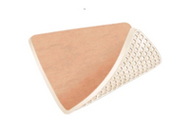
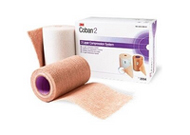
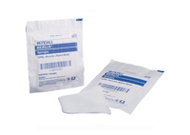
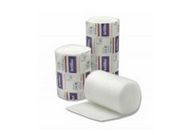
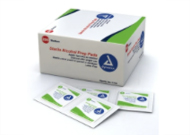
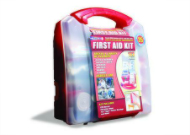
Injuries to the epidermis, muscle tissue, or any other layer of the skin are known as a wound. Wound care or First Aid for a wounded person is crucial for all of us to learn as this can save your life or your loved ones.
It is a procedure of treating the injured by following specific medical steps and ensuring that the patient's injury heals properly and promptly. Wound care products help professionals to perform all medical operations conveniently and provide a secure and optimum environment for damage to recover without any issues.
And here in this blog, we have given an overview of wound care and also listed different types of products along with their functionalities.
Many wound care products have different purposes and help treat different types of wounds and infections. Using other medical products for a wrong injury may affect your healing process and can cause further infection in the wounds. So, it's crucial to have proper knowledge before using any product.
Let's have a look at different types of products –
Gauze is a versatile medical material widely used in the healthcare industry for various purposes. It is a thin, woven fabric made from 100% cotton or synthetic fibers, and its porous nature also has high absorbing power.
Gauze is commonly used as a primary dressing to protect wounds from contamination and assist healing. It can be used with antiseptic solutions or medications to enhance its therapeutic effects.
Additionally, gauze is used during surgical procedures to control bleeding, apply pressure, or absorb fluids. It is also utilized for applying ointments, cleaning wounds, and creating sterile environments while medical operations.
Medical tapes are adhesive tapes or rolls of material used to secure dressings, bandages, or medical supplies to the skin. They are an essential component of wound care and provide support and protection. Mainly these tapes are made up of 3M Micropore material to ensure ventilation of the wounds.
Medical tapes come in various forms, including cloth, paper, foam, or transparent plastic. They have different adhesive strengths and can be sensitive to minimize skin irritation.
Medical tapes should be applied carefully to avoid restricting blood flow or causing skin damage. Commonly used in clinics, hospitals, and home healthcare.
Antiseptics are medical supplies used to eliminate or hinder the growth of germs and viruses in the body. They are commonly used in the healthcare industry to prevent infections and promote wound healing.
Antiseptics work by disrupting the cell walls, proteins, or enzymes of microorganisms, and eliminating them. Common antiseptics include alcohol, hydrogen peroxide, iodine, chlorhexidine, and benzalkonium chloride. These substances can be applied topically to clean wounds, sanitize hands, or sterilize wounded skin.
It's important to note that antiseptics are different from disinfectants, which are used to kill germs. While antiseptics are generally safe, some individuals may experience skin irritation or allergies, and they should be used cautiously.
Bandages are essential medical supplies used for various purposes in the healthcare industry. They are designed to wrap around wounds or injuries to provide support, protect from contaminated areas, and promote healing.
Characteristics of a wound determine which type of bandages is going to be more appropriate for the injury. Adhesive bandages, commonly known as "band-aids," are used for small cuts, scrapes, or blisters. Elastic bandages are stretchable and used to apply compression, support sprained joints, or reduce swelling.
Liquid bandages are suitable for minor wounds by forming a protective layer of polymer that creates a barrier between the wound and outside microorganisms. They are crucial tools in first aid kits, hospitals, and home healthcare settings.
First Aid is the first medical helps given to a patient with a wound or any kind of injury until professionals start their operation on the patient. Its main purpose is to preserve life and prevent further harm, and infection.
Basic first-aid skills are essential for everyone. The primary steps include assessing the situation, ensuring personal safety, and contacting emergency services.
Common first aid techniques include CPR for cardiac arrest, Paralizing fractured areas, treating burns with hydrogel bandages and cool water, and providing relief for choking victims.
First aid kits should be readily available and stocked with essentials like bandages, adhesive tape, antiseptic wipes, and gloves. First aid for wound training is recommended to maintain proficiency.
Wound Care Products is a classification of drugs and medical supplies, its primary function is to recover the injury and provide an optimum healing environment and maintain a barrier, protecting it from foreign microorganisms. The further you study you’ll know different products have their functions–
Wound care dressings play a vital role in the healing process by providing protection, promoting a moist environment for re-epithelization, and preventing infection.
Antimicrobial dressings are an excellent choice for infected wounds. They contain agents like silver or iodine that inhibit bacterial growth, reducing the risk of complications. Whereas, hydrogel dressings are beneficial for promoting and maintaining a moist environment for wounds with minimal to moderate pus.
Lastly, for wounds with irregular contours or hard-to-reach areas, foam dressings provide excellent conformability and cushioning properties. Choosing the appropriate dressing is crucial for successful wound management. Consultation with a healthcare professional is recommended for proper assessment.
Oral medicines are an essential component of comprehensive wound management, particularly for individuals with complex or chronic wounds. These medicines work in conjunction with other interventions to promote healing from within the body, aiding in the restoration of damaged tissue and facilitating the overall recovery process.
For instance, antibiotics are used to treat or prevent infection, analgesics is a painkiller used to manage pain, anti-inflammatory drugs to reduce inflammation, and systemic medications to address conditions such as diabetes or vascular disease.
Additionally, nutritional supplements like vitamins and minerals are prescribed to support tissue repair and boost immune function.
Wound Care Prep is a type of wound care management that involves gathering the necessary supplies and creating a clean and sterile environment to ensure effective wound healing and reduce the risk of infection. This is also known as Wound bed preparation.
This process helps to minimize the risk of introducing bacteria or other contaminants into the wound, promoting a favorable environment for healing. Adhering to proper prep procedures contributes to better outcomes and ensures the safety and well-being of the individual receiving this care.
The healing of a wound depends upon what kind of wound it is and If we talk usually a wound gets healed within 4 to 6 weeks with proper wound care and treatment.
These signs can help you to tell if the wound is infected or not–Pus and red area forming around the wound, fever or the body’s high temperature, more swelling, and scabs not forming on the infected area.
Some of the Wound Dressings are–
No, you can't swim or exercise with a serious wound. If you have a minor cut or abrasion take good care of it while exercising or swimming. Ensure first, that the wound should be covered properly with waterproof bandages while swimming. Secondly, a person should participate in a low-impact activity while exercising.
The healing of a wound depends upon what kind of wound it is and If we talk usually a wound gets healed within 4 to 6 weeks with proper wound care and treatment.
These signs can help you to tell if the wound is infected or not–Pus and red area forming around the wound, fever or the body’s high temperature, more swelling, and scabs not forming on the infected area.
Some of the Wound Dressings are –
No, you can't swim or exercise with a serious wound. If you have a minor cut or abrasion take good care of it while exercising or swimming. Ensure first, that the wound should be covered properly with waterproof bandages while swimming. Secondly, a person should participate in a low-impact activity while exercising.